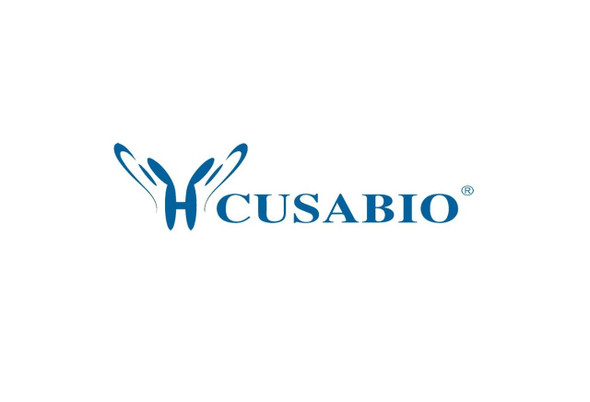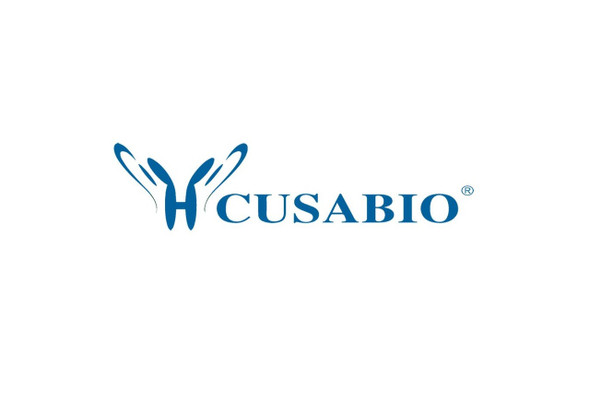Cusabio Human Recombinants
Recombinant Human Ephrin-A1 (EFNA1), partial | CSB-EP007460HU
- SKU:
- CSB-EP007460HU
- Availability:
- 13 - 23 Working Days
Description
Recombinant Human Ephrin-A1 (EFNA1), partial | CSB-EP007460HU | Cusabio
Alternative Name(s): B61; ECKLG; EFL 1; EFL1; EFNA 1; Efna1; EFNA1_HUMAN; EPH related receptor tyrosine kinase ligand 1; EPH-related receptor tyrosine kinase ligand 1; Ephrin-A1; Ephrin-A1, secreted form ; EphrinA1; EPLG 1; EPLG1; Immediate early response protein B61; LERK 1; LERK-1; LERK1; Ligand of eph related kinase 1; OTTHUMP00000033242; OTTHUMP00000033271; secreted form; TNF alpha-induced protein 4; TNFAIP 4; TNFAIP4; Tumor necrosis factor alpha induced protein 4 ; Tumor necrosis factor alpha-induced protein 4
Gene Names: EFNA1
Research Areas: Cardiovascular
Organism: Homo sapiens (Human)
AA Sequence: DRHTVFWNSSNPKFRNEDYTIHVQLNDYVDIICPHYEDHSVADAAMEQYILYLVEHEEYQLCQPQSKDQVRWQCNRPSAKHGPEKLSEKFQRFTPFTLGKEFKEGHSYYYISKPIHQHEDRCLRLKVTVSGKITHSPQAHDNPQEKRLAADDPEVRVLHSIGHS
Source: E.coli
Tag Info: N-terminal 6xHis-SUMO-tagged
Expression Region: 19-182aa
Sequence Info: Partial
MW: 35.4 kDa
Purity: Greater than 90% as determined by SDS-PAGE.
Relevance: Cell surface GPI-bound ligand for Eph receptors, a family of receptor tyrosine kinases which are crucial for migration, repulsion and adhesion during neuronal, vascular and epithelial development. Binds promiscuously Eph receptors residing on adjacent cells, leading to contact-dependent bidirectional signaling into neighboring cells. Plays an important role in angiogenesis and tumor neovascularization. The recruitment of VAV2, VAV3 and PI3-kinase p85 subunit by phosphorylated EPHA2 is critical for EFNA1-induced RAC1 GTPase activation and vascular endothelial cell migration and assbly. Exerts anti-oncogenic effects in tumor cells through activation and down-regulation of EPHA2. Activates EPHA2 by inducing tyrosine phosphorylation which leads to its internalization and degradation. Acts as a negative regulator in the tumorigenesis of gliomas by down-regulating EPHA2 and FAK. Can evoke collapse of bryonic neuronal growth cone and regulates dendritic spine morphogenesis.
Reference: A novel immediate-early response gene of endothelium is induced by cytokines and encodes a secreted protein.Holzman L.B., Marks R.M., Dixit V.M.Mol. Cell. Biol. 10:5830-5838(1990)
Storage: The shelf life is related to many factors, storage state, buffer ingredients, storage temperature and the stability of the protein itself. Generally, the shelf life of liquid form is 6 months at -20?/-80?. The shelf life of lyophilized form is 12 months at -20?/-80?.
Notes: Repeated freezing and thawing is not recommended. Store working aliquots at 4? for up to one week.
Function: Cell surface GPI-bound ligand for Eph receptors, a family of receptor tyrosine kinases which are crucial for migration, repulsion and adhesion during neuronal, vascular and epithelial development. Binds promiscuously Eph receptors residing on adjacent cells, leading to contact-dependent bidirectional signaling into neighboring cells. Plays an important role in angiogenesis and tumor neovascularization. The recruitment of VAV2, VAV3 and PI3-kinase p85 subunit by phosphorylated EPHA2 is critical for EFNA1-induced RAC1 GTPase activation and vascular endothelial cell migration and assembly. Exerts anti-oncogenic effects in tumor cells through activation and down-regulation of EPHA2. Activates EPHA2 by inducing tyrosine phosphorylation which leads to its internalization and degradation. Acts as a negative regulator in the tumorigenesis of gliomas by down-regulating EPHA2 and FAK. Can evoke collapse of embryonic neuronal growth cone and regulates dendritic spine morphogenesis.
Involvement in disease:
Subcellular Location: Cell membrane, Lipid-anchor, GPI-anchor, SUBCELLULAR LOCATION: Ephrin-A1, secreted form: Secreted
Protein Families: Ephrin family
Tissue Specificity: Brain. Down-regulated in primary glioma tissues compared to the normal tissues. The soluble monomeric form is expressed in the glioblastoma multiforme (GBM) and breast cancer cells (at protein level).
Paythway: MAPKsignalingpathway
Form: Liquid or Lyophilized powder
Buffer: If the delivery form is liquid, the default storage buffer is Tris/PBS-based buffer, 5%-50% glycerol. If the delivery form is lyophilized powder, the buffer before lyophilization is Tris/PBS-based buffer, 6% Trehalose, pH 8.0.
Reconstitution: We recommend that this vial be briefly centrifuged prior to opening to bring the contents to the bottom. Please reconstitute protein in deionized sterile water to a concentration of 0.1-1.0 mg/mL.We recommend to add 5-50% of glycerol (final concentration) and aliquot for long-term storage at -20?/-80?. Our default final concentration of glycerol is 50%. Customers could use it as reference.
Uniprot ID: P20827
HGNC Database Link: HGNC
UniGene Database Link: UniGene
KEGG Database Link: KEGG
STRING Database Link: STRING
OMIM Database Link: OMIM










